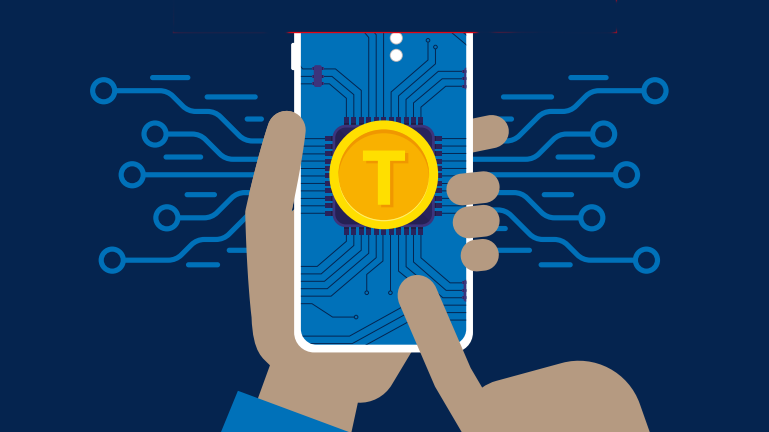Calastone and Microsoft have joined forces to create market efficiency across the global investment funds industry, through the application of cloud and distributed ledger technology (DLT).
The collaboration combines DMI (Distributed Market Infrastructure) Fund Services’ suite of solutions with Microsoft Azure’s multi-party, confidential-computing capabilities, featuring its confidential consortium framework (CCF), and other key technologies, to enable innovation, further enhance client experience and reduce costs.
In a recent webinar, we shared our vision for accelerating the fund industry’s ‘journey’ to digitalisation, predictions for the future of the industry and views on the role that DLT will play.
Edward Glyn, Head of Global Markets at Calastone, moderated the discussion between Adam Belding, Chief Technology Officer at Calastone and Brent Truell, Principal Program Manager at Microsoft Cloud for Industry. In this Q&A session, we look at some of the key highlights from the webinar (available in full here).
Tech that goes beyond goals
Edward Glyn (EG): Adam, what has been your experience of building Calastone’s DMI? What was your vision and why did you decide to use DLT?
Adam Belding (AB): The mutual fund has evolved as a vehicle for collective investment. It’s existed for a long time – predating computer science – and was a necessary invention for individuals looking to get a return on their investment, enabling economies of scale to be invoked to make that happen efficiently.
This is where we started. And that’s important because I found I was having conversations with people in the industry who were getting distracted by specific thinking around DLT; I tried to draw it back to what we are actually trying to do.
The problem facing our industry now revolves around the fragmentation of data and the presence of multiple independent actors and parties who are responsible for making funds work, combined with the burden of legacy infrastructure.
This is what we based the idea of DMI Fund Services on.
While introducing efficiency gains and solving for low-hanging fruit, we’ve also found something else, however: the current mutual fund structure itself is a limiting factor.
There is a far more efficient way to enable collective investment – which our collaboration with Microsoft allows us to do. Ultimately, we want to allow lots of people to invest their money together and simplify the process and widen access to underlying markets.
This means we have a twin track approach with DMI Fund Services: creating an optimum structure, but with a version of DLT that has all the features necessary for operating in a heavily-regulated financial services environment. That’s why we’re really excited about how we can apply this technology in the mutual funds space.
‘Active’ encryption & the role of remote attestation
EG: Why is this technology exciting and why does adding confidential computing to the DLT mix solve a number of issues − particularly issues that have prevented adoption of DLT in regulated financial markets?
Brent Truell (BT): Confidential computing refers to a technology called trusted execution environments, which creates a protected space for code and data. You could think of it like a black box, where all data that is being used at a point in time is protected and encrypted.
So, by being able to place your data and your code in a trusted execution environment, we can now trust that the data remains encrypted while in use.
While that is beneficial for security reasons, a novel aspect of trusted execution environments in confidential computing is that we can enable a remote attestation. This allows someone to call into a trusted execution environment remotely to verify that the code that’s running inside that environment is the code that’s expected to be there – giving the ability to trust that code.
Brokering tech & relationships in tandem
EG: Our world at the moment consists of four different participants – the investor, distributor, asset manager and the asset servicer. Why should people be on this journey with us −
what are the benefits of these technologies, in terms of client satisfaction, cost reduction and risk reduction?
BT: For those four different parties to work together, they have to interoperate with each other and exchange, reconcile, and audit data sets. So, they end up with the costs and burdens associated with maintaining silos of data. This all adds up to inefficiencies and cost.
But this is not something that any individual party can solve on their own. It requires a company like Calastone to step in and take on the job of adopting this technology and servicing it for participants and customers in such a way that they can integrate it within their own existing IT estate. That’s where value is ultimately going to come from.
Threat versus opportunity
EG: We have a question on the evolution of the technology: how much of a challenge are transfer-agency (TA) firms facing?
AB: Transfer agency is a process that must occur, owing to regulation, so it won’t be eliminated so long as there are mutual funds. So then the question is how to make that process more efficient. A lot of firms are stuck because they don’t make a huge amount of margin on services they provide around TA. But if you could optimise those services, and make the processes around them simpler, it’d mean you could differentiate and make your offering more competitive.
DLT also gives the opportunity to do this collectively, bringing together a critical mass of players across our industry. People need to embrace this and understand there’s far more opportunity than threat here.
BT: To add to that: as we look at actors in the value chains here, it’s very easy to think that DLT might replace what they do. But as you double-click into exactly what it is they do, you find there are all kinds of details that technology can’t solve instantaneously with the flip of a switch.
So, it’ll take time before we see any massive disruption. As with other technologies, you adopt that technology, run it side by side with existing infrastructure and, over time, figure out how everything is going to work and what happens to players longer term.
Predictions for the future
EG: If this webinar were to take place again in a year or two years’ time, what are your predictions about what will have changed, who will have been successful and what the ecosystem will look like?
BT: If we think about what the world is going to look like in two years – we certainly see this trend towards digital assets, figuring out a way to make our assets programmable and how are we going to bring that to customers. Through the DMI we have found a terrific way to achieve this.
And so, if you were to ask me what this conversation would look like in 2 years, we’d probably be talking about how the model for the DMI has been applied elsewhere in the industry.
AB: We’re creating great technology to optimise mutual funds, to make the whole process work more effectively. It’s a combination of thinking about the art of the possible in the light of what new technology can do, and applying that to investments.
EG. At our launch of DMI Fund Services, I said that what we were developing represented a once-in-a-generation opportunity to transform our industry. I believe that message was correct then and it’s true today too. We remain committed to helping others in the industry in any way we can, to leverage this opportunity.










